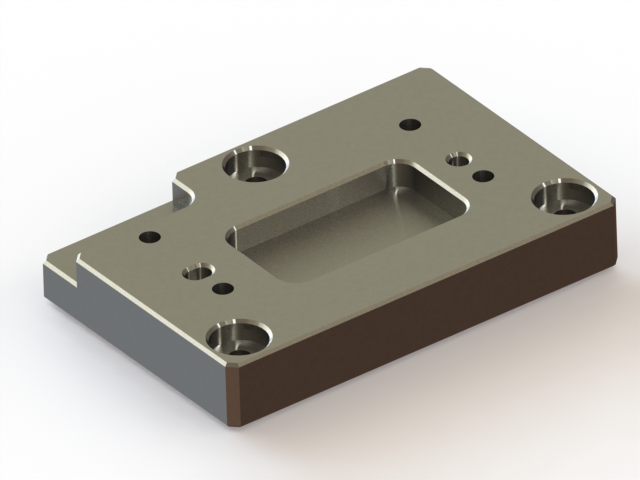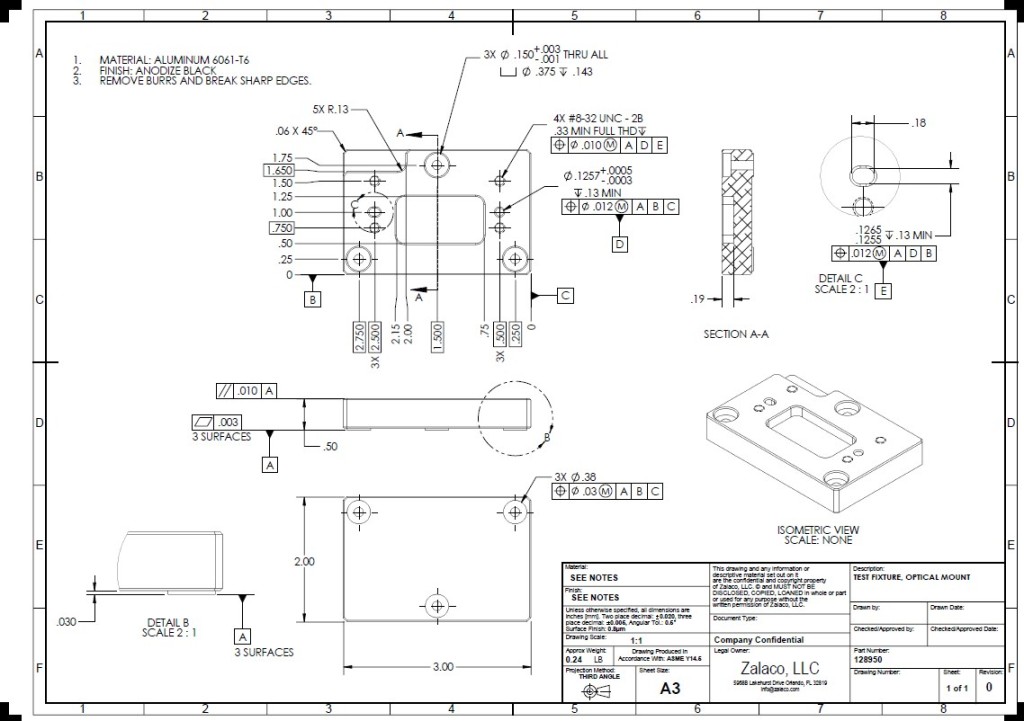
What you need to know about Mechanical Drafting
If you’ve landed on this page, you probably did a search for “mechanical drafting” or something similar. I can’t be sure exactly what you’re looking for, so this page will serve as a resource that can hopefully get you to your final destination. I will explain what mechanical drafting is, why you need to take it seriously, and how much it should cost. If there is anything I can help with, please do not hesitate to drop me a note or schedule a free consultation.
All the best,
Zack Monninger | Owner of Zalaco, LLC
What is mechanical drafting?
Generally, mechanical drafting refers to the creation of 2D drawings that communicate and document the requirements for a particular part or assembly. In many ways, it’s the language that allows the engineers and designers to communicate with the manufacturers and producers. An engineering drawing should always stand on its own, or reference whatever else is needed to fully build or assemble the item the drawing depicts.
Why do I care?
If you are interested in having parts manufactured, you need to care. To work with the best suppliers and get their best prices, you need to communicate in their language. A professionally prepared drawing package will provide them all of the information they need to generate a quote. That means you get quotes faster and they have less questions, giving you credibility along the way.
Can’t I just draw stuff on a napkin?
Absolutely. Graph paper is even better. If you include all of the pertinent information your supplier will want to know (materials, finishes, tolerances, etc) then you have effectively created an engineering drawing.
Why do you need a drawing if you have a 3D model?
You might not need it to get parts made, but you’re adding risk that there will be mis-communication at some point. In fact, your manufacturer would prefer the 3D model in many cases. What the drawing does is put things in writing so everyone is on the same page. It also provides a control point in case you change things. What if you move the location of a hole, but you’ve already sent your supplier the old model? You send him the new one, but what he screws up and builds it to the old one? Had you sent him a revised drawing (Rev A to Rev B) with the new information, and updated your purchase order to Rev B, everyone should be on the same page (and you have the paper trail to prove it).
What kind of information does the drawing contain?
To stand on its own, it must contain every bit of information required to produce the part exactly how you need it. This includes (but is not limited to) materials, finishes, colors, dimensions, tolerances, parts lists, marking requirements, handling requirements, interface requirements – I could go on for a long time. Each part or assembly is unique in its requirements. The drawing may reference other drawings or identify 3D models that are necessary for manufacture.
Do I really care about tolerances?
Yes you do. You care because they impact both the cost and performance of the parts you are having made. Modern manufacturing can achieve amazingly precise tolerances. In many cases, you get these tolerances for “free” because the equipment making your part is just that good. But how good does it really need to be? How close to .500” inches does that hole diameter really need to be? You want the parts to be manufactured as cost effectively as possible, but you also need them to work. This is why you care about tolerances.
Who should I hire for mechanical drafting services?
It depends on your needs. During my time in industry, the mechanical design engineers did the vast majority of drafting when it involved new product design and development. Keeping the drawings up to date and making minor changes often fell to support staff. If you have an engineer on staff to oversee your drafting needs, I’d recommend finding a freelance drafter or firm that specializes in your needs. Otherwise, I would recommend outsourcing to someone that can provide both the oversight and experience in one service (this is the type of service I would provide).
How much should I expect to pay?
You will find a mix of hourly rates, per sheet/per view rates, and fixed price rates that are bid on a per project basis. On an hourly basis, expect to pay $45/hour on the low end for an experienced draftsman, and up to $150 an hour for a skilled and experienced engineer who is designing and drafting. You can save money by finding less experienced workers or going overseas. Do not get put off by hourly rates. With experience comes efficiency. And there’s no refund when you place an order for $10,000 worth of parts that were specified incorrectly.
OK. So give me an example.
No problem. Below is a 3D image of simple mount designed to adapt one component to another. Below the image, you can see a sample of what a professionally drafted drawing would look like to have this part manufactured.

Sample machined fixture for mounting an optical assembly
View this drawing in PDF form.
How can Zalaco help with your mechanical drafting needs?
Use the form below to schedule a time to chat with me about your needs, or fill out the contact form below with any questions or inquiries. I look forward to helping you with your project!
-Zack Monninger
Comments or questions are welcome.

